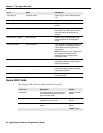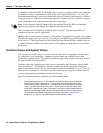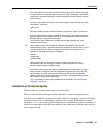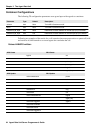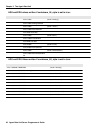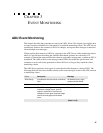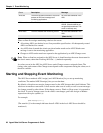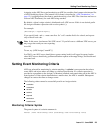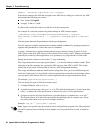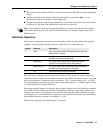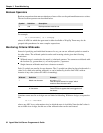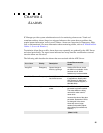
Chapter 3 Event Monitoring
28 Agent Data Unit Server Programmer’s Guide
When a client first assigns monitoring criteria to the server:
All existing ADUs are checked to see if any match the specification. All subsequently created
ADUs are checked for a match.
Any ADUs that do match the criteria are placed under watch and an ADU.Watch event
message is sent to the monitoring application.
Changes to ADUs under watch are reported to the application by an ADU.Change event.
Note: When a client has assigned to the ADU Server, it should monitor the event data stream for
the data it wants, rather than invoking ADU.Get…() methods repeatedly.
As values are set in the ADU, the ADU Server sends Change events to assigned clients. The
timing, order, and content of the Change events depend on the components setting the values, are is
therefore variable.
Starting and Stopping Event Monitoring
The ADU Server methods ADU.Assign() and ADU.Monitor() let you set up monitoring
conditions. The method ADU.Deassign() lets you revoke them.
By default, a client does not receive change events for the ADU changes that it itself initiates. This
cuts down on needless event traffic. It does receive other sorts of events, as well as event messages
for changes caused by other clients. If the change causes a .Watch or .Drop event, it is reported to
the client. To receive change events for the client's own changes, prefix the Assign or Monitor
expression with a plus symbol (+):
For example:
[ADU.Assign("+*")]
(The asterisk (*) in the example indicates that all ADUs in the local ADU Server should be
monitored
.)
ADU.end The ADU has been terminated. The server
passes an ADU.end message to all
monitoring applications.
All of the data elements in the
ADU.
ADU.transfer The ADU has been transferred. The new client and the
ADUID. (Note that ADUs are
not generally transferred. This
event is relatively rare.)
ADU.watch The ADU matches the monitoring criteria. All of the data elements in the
ADU.
Event Description Message
(Sheet 2 of 2)



